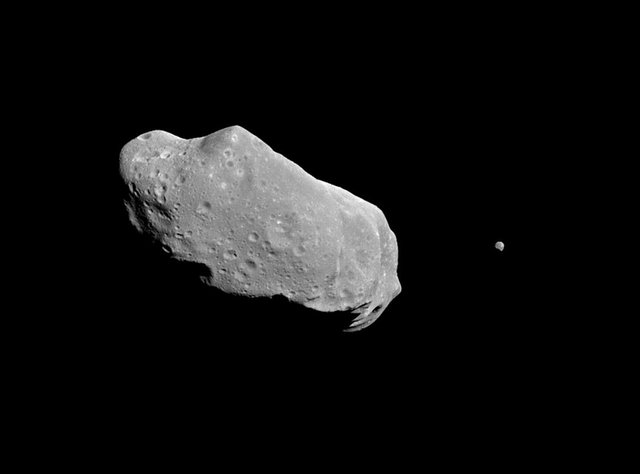RE: One Bit News - Technology - Issue 14
Gold in asteroids
Asteroids, like all rocky planets are formed from the remains of heavy and solid elements present on site during the formation of the solar system. Gold is not more abundant than on Earth: gold is more abundant than in the earth's crust alone. In addition, gold is found on the surface as well as inside, because of the differentiation that did not occur.
This is because it is on the surface that it is much more profitable and convenient to go looking for it there! Indeed, send a space probe on an asteroid, we know how to do it and it's only a problem of cost. On the other hand, dig a hole to the center of the Earth, we do not know how to do it and it is not possible technically (we have to cross the rocky cliff at 5000 ° C and then dig into a metal core, all under pressure and unimaginable constraints).
This is why we talk (often hyperbolic still) of asteroids "filled with gold": gold is simply more accessible than on Earth and not necessarily in larger quantities.
To go further, know that all the treasures or mineral resources that are planned to mine are not gold or silver: some comets are filled with ice water. Now water, if electrolysis, we end up with hydrogen and oxygen, which is nothing other than fuel for rocket. It is therefore possible to make "gas stations" for space expeditions: it would be much more profitable there than taking fuel on Earth (which is more abundant, but weighs heavily on takeoff).
Without forgetting the solar energy: on Earth, a good part of the luminous flux received from the Sun is directly reflected in the space and another part is diffused or absorbed by the atmosphere. Space is even more conducive to the exploitation of solar energy than it is on Earth: it is not for nothing that the International Space Station (ISS), the Hubble Space Telescope or various other probes or satellites are powered by solar energy.
Finally, other chemical elements are simply absent from the earth's crust because they have flown into the inter-planetary space. This is the case of helium-3. Because of the volcanism and the modification of the continental rocks, all the helium-3 that the Earth had is no longer there today. The moon, on the other hand, has significant helium-3 resources, trapped in the rock for billions of years. This helium is a possible nuclear fuel for fusion power plants, which are much cleaner than current plants.

Hi @lovework
Thanks for bringing additional information on this topic.
Now, I wonder what the price of on gallon of water will be on the first interplanetary "gas-station" :)
As of today is't about $1700/kg with the new Falcon Heavy.
Cheers,
@Onebitnews
1,700 $ / kg !! wow it's almost the triple of the price of silver :)
Yepp, I don't know the price of heroine... But it't "up there" I guess.
Cheers, @Onebitnews
Agree, but how are we going to drill in space?
As in science fiction movies: we send a machine that will dock with the asteroid by harpooning for example. Then all the prospecting material is brought down. Then, either refining on site or bringing the ore back for processing on land.
Of course, we will attack, preferably, the asteroids that pass closest to the earth. There are about 15,000, so there is a lot of choice.
Hi @redouanemez
Good question, it is possible to scout and find the right one to prospect from earth using telescopes and spectroscopy.
Cheers, @Onebitnews
Yes you are right !